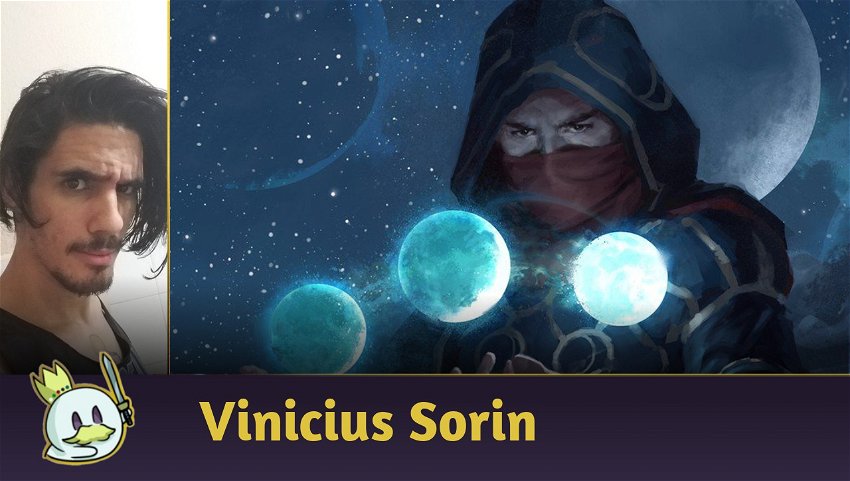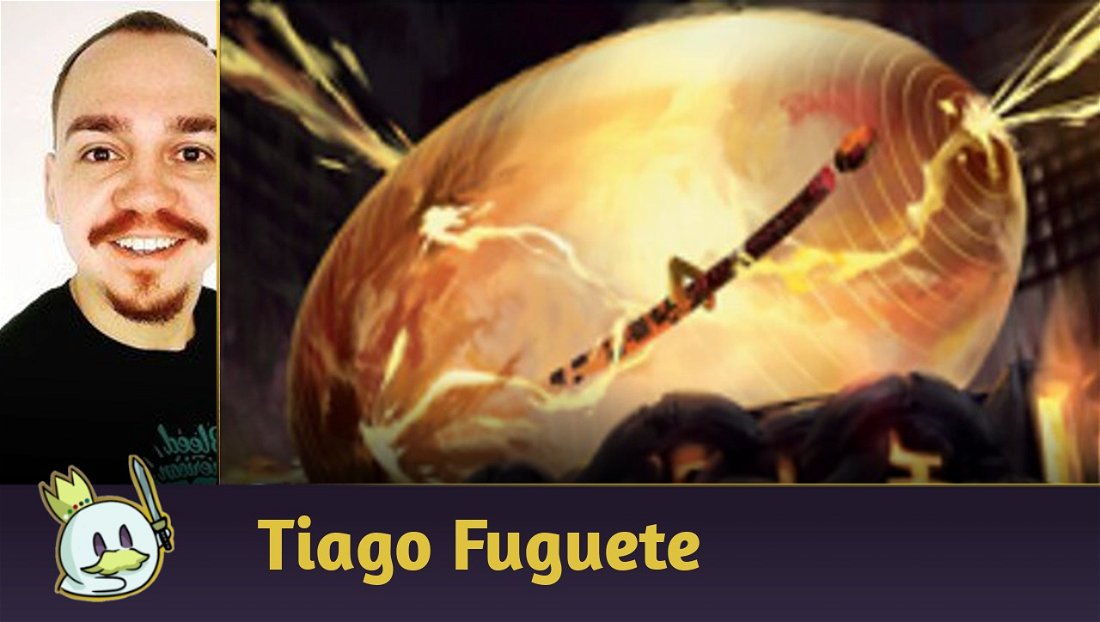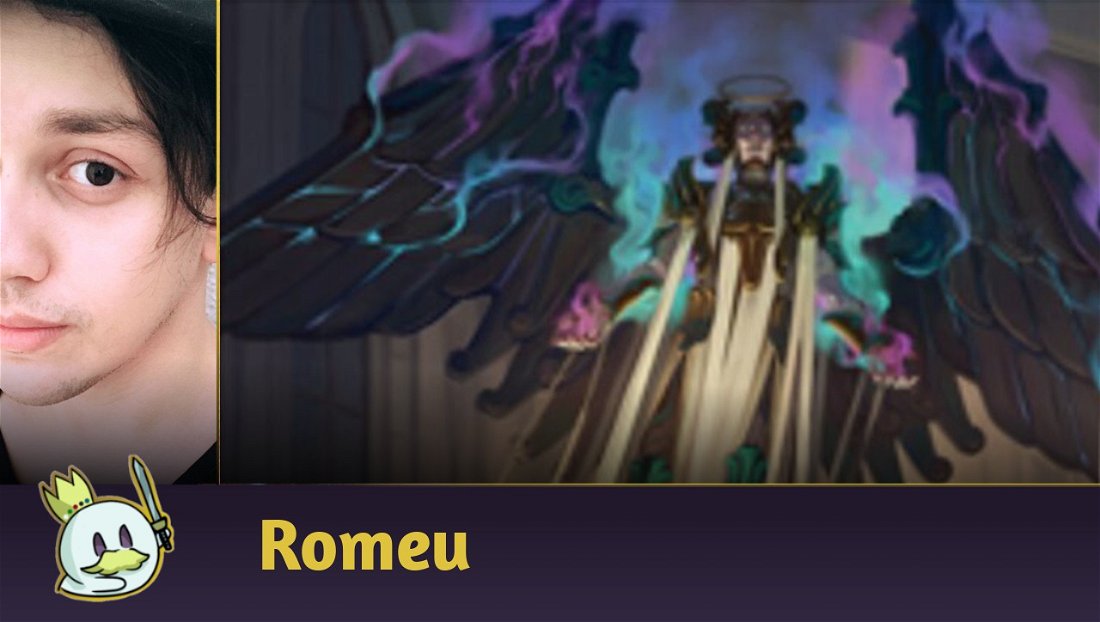Hello readers.
I'm here to bring you another episode of our series on Commander Deckbuilding. In the last episode, I talked about the ubiquitous mana accelerators. Today we are going to delve into one more of these functions: drawing cards.
I explained the concept of drawing and their importance in the game in this article, where I talk about the functions of cards, and I recommend reading it if you don't know exactly what I'm talking about.
But just summarizing a bit just so that this article works minimally on its own:
What are draw effects in Magic?
Draws are basically effects that fill your hand with new cards. Its function is to replenish you with resources as the game progresses, to help you always have something to play and stay active in a game. Have you ever been in a situation where you had a lot of land in play, but had nothing to cast?!. This is usually because your hand is empty, and a good draw resource would be more than welcome at a time like this.
But not all draws are effective in all cases. There are different types of them, and some work better than others depending on the context. At the same time, there are cards that appear to be excellent draws, but aren't necessary. Identifying a card's function is important in determining what space it should actually occupy in your deck.
To help you with this, I've outlined the main categories of draw effects with their pros and cons, below.
Effective Draws

Effective draws are those that actually serve to increase the number of cards in your hand. To determine whether a draw is effective or not, compare the number of cards in your hand you would have before you cast the spell (considering the draw card itself) with the number you would have after it resolves. If after the effect's resolution, you have more cards in your hand than you had before, then it's an effective draw; otherwise it will likely be a cantrip or looting (see below).
The most common case of effective draws are instants or sorceries that make you draw two or more cards. A player who plays a Deep Analysis with 4 cards in hand would end the play with a total of 5 cards, so this would be an effective draw. If you consider that it is possible to play the same Deep Analysis from the graveyard with flashback ability, the card advantage obtained with it is even greater.

It is worth noting that some draws may not actually be effective depending on how they are played. A player who casts a Pull From Tomorrow, for example, with X = 3 and has 4 cards in hand would draw three cards and then discard one. In the end they would have 5 cards in hand, which is more than before, so this would be an effective draw. However, if the same Pull from Tomorrow were used with X = 2, the final sum would be 0, the player would still have 4 cards in hand (although not necessarily the same four cards) and there would be no card advantage gained. If X equals 1, the player would end up with 3 cards in hand, and the result would be a loss of resources.
Effective draws are the most important within a Commander deck's draw and card advantage package. They are the ones that will really give you the necessary breath in the later stages of the game, as explained above. Most of your draw pack should be filled with this type of card, otherwise the chances of it being insufficient during the game are considerable.
Effective draws are found almost exclusively in the colors Blue, Black and Green. White and Red are precarious in this role, which is one of the main reasons why decks of these two colors currently have a higher difficulty in Commander tables. In most cases, white and/or red decks that do not have access to any of the other 3 colors seek to compensate for this "disadvantage" with other kinds of draw spells.
Examples: Harmonize, Ambition's Cost, Ancestral Vision, Ancient Craving, Concentrate, Demonic Lore, Hedron Archive, Sign in Blood, Blue Sun's Zenith, Fact or Fiction, Jace's Ingenuity, Mulldrifter, Rishkar's Expertise, Soul's Majesty, Disciple of Bolas, Ad Nauseam, Urban Evolution, Treasure Cruise, Secret Rendezvous.
Cantrips

Cantrips are spells that replace themselves, not changing the number of cards in your hand after they resolve. They usually take the form of a spell that does some other minor effect in addition to “draw a card” (Ponder).

Cantrips cannot normally be considered effective draws, as they don't increase the number of cards in your hand. Still, cantrips are included in decks for a variety of reasons. They can effectively "filter" a deck, so more useful cards can be drawn faster without losing the card advantage. They can also cheaply increase the number of spells played in a turn, which is a key factor in some decks, particularly those using the Storm mechanic. Some cantrips have additional effects that can serve as a response to an obstacle in play.

Some cantrips, such as Brainstorm or Serum Visions, can give a false impression of being effective draws. Be careful not to fall into this trap! As stated above, cantrips are not “real draws”. They only improve the quality of your cards, not your card advantage.
Although they are very useful, be careful not to fill your deck's draw package with cantrips alone. If you need to use a lot of them - perhaps because your deck can extract a lot of value from this type of card - consider increasing the number of slots in your package, or even creating a new package within the deck just for the cantrips.
Another detail is that most of the time the draw effect of a cantrip is secondary, as if it were a kind of bonus added to another main effect. In these cases, note that the cantrip can be fitted into another package, as is the case with Explore, for example, which can easily be considered as a ramp, occupying the slot in the mana acceleration package instead of draws.
Cantrips are found in all colors, with a slight higher recurrence in Blue.
Examples: Baleful Strix, Guild Globe, Opt, Veil of Summer, Growth Spiral, Gitaxian Probe, Ponder, Preordain, Explore, Ichor Wellspring, Warlord's Fury, Scout's Warning, Bonds of Mortality, Prophetic Prism.
Lootings

Looting is an effect that causes a player to draw one or more cards and then discard a number equal to the number they drew. Some loot, particularly red looting, may require discarding before a draw. The three cards above exemplify this type of draw very well, which, like the aforementioned cantrips, doesn't generate card advantage and, therefore, cannot be considered effective draws either.
Loots have a similar utility to cantrips, with the difference that they almost always end up throwing some cards into the graveyard. This is desirable in certain strategies focused on using the graveyard as an alternative source of resources to one's own hand.
The looting mechanic appears most commonly on blue and red cards.
Examples: Cathartic Reunion, Merfolk Looter, Greater Good, Thrill of Possibility, Cephalid Coliseum, Magus of the Bazaar, Dark Deal, Whirlpool Warrior, Incendiary Command, Tolarian Winds, Fateful Showdown, Molten Psyche, Winds of Change.
Wheel Effects

Very similar to loot, wheels are effects that make one or more players discard their entire hand and then draw a set number of cards. Most wheels are global effects, which affect all players symmetrically, and are resources used for a variety of purposes, whether to force your opponent to discard or balance the amount of cards players have in their hand.

However, the most common practical use for wheel effects is as actual draws. Attacking with an Anje's Ravager when you no longer have any cards in your hand practically means drawing three cards without any counterpart.
Wheel effects are more frequent in red, being the main effective draws in decks of this color. In addition, like looting, they are also highly regarded in decks that abuse graveyards.
Blue also has its own share of wheel effects, which shuffles cards into the library instead of discarding them (for example, Time Spiral).
Examples: Whispering Madness, Dragon mage, Mindmoil, Arjun, the Shifting Flame, Magus of the Wheel, Jace's Archivist, Heartwarming Redemption, Valakut Awakening,Wheel of Misfortune, Echo of Eons, Wheel of Fate, Commit // Memory, Teferi's Puzzle Box.
Recurring Draws

Recurring draws are effects, usually from permanents, that make you draw additional cards with some regularity. They tend to be slow cards and generate more modest draws (rarely more than one card at a time), but in the long run they can yield many extra resources if they can be kept for multiple turns.
The longer it stays in play, the greater the value extracted from it. On the other hand, the fact that they are permanents makes them also susceptible targets to opponents' removal.
Recurring draws can be considered as effective draws in a Commander deck, but it's important to consider that their actual effectiveness depends on how long you'll be able to keep them in play.
Most recurring draws are blue, black or green, but there are a fair number of artifacts that also fulfill this function.
Examples of Recurring Draws: Consecrated Sphinx, Narset, Parter of Veils, Wedding Ring, Howling Mine, Well of Ideas, Archivist, Necropotence.
Conditional Draws

Conditional draws are (usually recurring) effects that will only work in specific cases. A Bident of Thassa, for example, can be considered an effective draw, but it's only useful if you have creatures, and they can damage an opponent.

The same goes for several other draw effects that are conditional. These cards can be powerful resources, but you must be aware of the conditions for them to work. You should only rely on them if your deck is competent at meeting these conditions. Otherwise, they have a good chance of being ineffective or even useless.
Conditional draws exist in all color identities. In some cases, such as white and red mainly, this type of card is among the only draw options available.
Here are some (but not all) examples of effects that define a draw spell as conditional:
ETB or LTB Abilities: Draw effects that trigger when a permanent enters the battlefield or dies. The same can also apply to draws triggered by casting spells.
Ex.: Mentor of the Meek, Garruk's Packleader, Kindred Discovery, Grim Haruspex, Seer's Sundial, Skullclamp, Jhoira, Weatherlight Captain.
Touch: Effects that trigger when a creature deals damage to a player.
Ex: Hunter's Insight, Ohran Frostfang, Reconnaissance Mission, Dragon Mage, Rogue's Gloves, Shadowmage Infiltrator.
Temporary Draws: Mostly red effects that exile cards, which must be used in the same turn.
Ex.: Act on Impulse, Chandra, Torch of Defiance, Commune with Lava, Song of Creation, Grafted Skullcap, Eruth, Tormented Prophet , Memory Jar.
Permission: Here, we include all draw effects that depend on an opponent's action or choice.
Ex: Mangara, the Diplomat, Rhystic Study, Benefactor's Draught, Waste Not, Browbeat, Reparations.
Effects that allow you to cast cards directly from your deck or graveyard
Although it doesn't qualify as "draw", effects that allow you to cast cards straight from your deck at the end give you the card advantage that you see in draw effects. This time, the cards go straight to the battlefield instead of your hand.

These cards can be conditional, only allowing you to play lands like Courser of Kruphix or Augur of Autumn. Or they may have no restrictions like the cards: Future Sight, Falco Spara, Pactweaver, bolas's citadel, The Reality Chip, Magus of the Future and Experimental Frenzy.
There are also effects that allow you to play cards from the graveyard that would also be a form of card advantage, such as: Kethis, the hidden hand, Ancient Greenwarden or Crucible of Worlds.
Conclusion
Having said all this, it is clear that not every draw will fulfill the expected role of replenishing your hand in every case. Actual and recurring effects are the most efficient in this sense, while the others must be observed with more attention to detail.
The importance of understanding the role of a draw card and identifying its type is crucial when defining the draw package for a Commander deck. I hope this article has helped you to be able to do it on your own and build better decks.
I look forward to your feedback in the comments and would like to know what types of draw effects you most enjoy using in your Commander decks. In the following episodes, we will unravel one more of the card functions: the Interactions!
Until then!














— Comentarios 0
, Reacciones 1
Se el primero en comentar